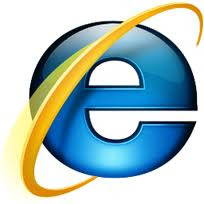
Windows XP was developed from its predecessor Windows 2000. It was the first commercial operating system from Microsoft which was designed to run on Windows Kernel and NT architecture. Since its release it has been hugely popular. Till 2006, 400 millions of copies were sold out. Though its avatar, Windows Vista was launched in 2006,Microsoft continued to deal in XP through system builders till 2009. Windows XP could be available through downgrading Windows 7 Ultimate, Windows 7 Pro, Windows Vista Ultimate or Windows Vista Business.
Editions Of Windows XP
Windows XP Home and Windows XP Professional are the most popular editions of Windows XP. Windows XP Home and Windows XP Professional were designed for home users and power users respectively. Windows XP Media Center Edition was launched with additional multimedia features improving the ability to record and watch TV shows, view DVD movies, and listen to music. Windows XP Tablet PC Edition was developed to run stylus applications built on the Tablet PC platform.
Architecture Of XP
The advanced features of Windows XP, i.e reliability, scalabilty, security and portability are attributed to its architecture. Windows' earlier avatars did not feature this type of architecture. The key design features of XP architecture are layered design, object oriented design,abstraction and client/server communication. Windows XP operate in two modes, namely- User mode and Kernel mode. User mode is the closest layer to the user which supports all application programs run by the user. Kernel mode, more closely related to the hardware, comprises hardware device drivers. Windows XP device drivers can run on all types of hardware. Kernel mode is also known as Hardware Abstraction Layer(HAL in short form).
User Interface Of Windows XP
Compared to its predecessor Windows 2000, Windows XP features more improved task based Graphical User Interface, which is described below.
1. The recently added programs are highlighted on the start menu.
2. The taskbar buttons of one Windows application are combined into one button.
3. Explorer window features task based side bars.
4. The taskbar and other tool bars could be locked to forestall accidental changes.
5. A blue triangle is featured in Explorer.
6. Desktop features drop shadows for icon labels.
7. Menus cast shadows.
8. DirectX 8.0 could be upgraded to DirectX 9.0c.
9. Start-up, logon, logoff, hibernation and application launch processes are much faster compared to Windows 2000.
10.User switching, which enables the user to save the current state and open applications of their desktop and allow another user to log on without losing that information, is faster.
11. If a driver upgrading does not work upto satisfaction, the new driver could be replaced by the older one.
12. Networking features like Windows Firewall, NAT traversal APIs, Internet Connection Sharing integration with UPnP, support for most DSL modems, peer to peer networking, network bridging, IPv6 and Teredo tunneling are implemented.
13. Component Object Model (COM in short form) is registration free.
14. Media features in Windows Media format are improved and Windows Media Center is introduced.
15. Kernel and power management is improved.
16. Security features like Credential Manager, Software Restriction Policies, Encrypting File System improvements and Data Execution Prevention are implemented.
Windows XP Troubleshooting
Like any other software Windows XP comes with many bug,undetected during the testing phase. In case the users face any problem while using it, online computer support should be sought. However Microsoft released many service packs to to fix the Windows XP bugs, reported from the field. The latest was Service Pack 3, which was released on 21st April,2008 and could be downloaded from Microsoft Download Center. In spite of that, many problems may still crop up, which could be resolved with the help of online PC support.
Source: EzineArticles









